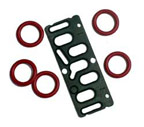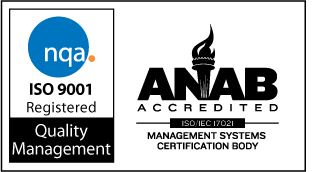
|
7108
S. Alton Way, Unit I |
(303) 758-2728
Home > Viton > Permeation Resistance
Viton™ Resistance To Reduce Emissions

Even if high temperatures or aggressive fluids are not involved, Viton may be specified because it has good resistance to permeation. In automotive, chemical processing, and other industries, Viton FKM helps minimize fugitive emissions to meet Clean Air Act requirements.
| Permeation Rates1 for Selected Elastomers and Nylon 122 | ||||
| Material | Fuel
C at 23ºC |
90%
Fuel C, 10% Ethanol |
85%
Fuel C, 15% Methanol |
Toluene at 40ºC |
| NBR (33% ACN) | 669 |
1028 |
1188 |
- |
| HNBR (44% CAN) | 230 |
553 |
828 |
- |
| Fluorosilicone | 455 |
584 |
635 |
- |
| Nylon 12 | 5.5 |
24 |
83 |
- |
| Viton GLT | 2.6
|
14 |
60 |
- |
| Viton AL | 0.8 |
6.7 |
32 |
- |
| Viton A | 0.8 |
7.5 |
36 |
49 |
| Viton GFLT | 1.8 |
6.5 |
14 |
- |
| Viton B | 0.7 |
4.1 |
12 |
- |
| Viton GF | 0.7 |
1.1 |
3.0 |
7 |
1
Average Permeation Rate for ASTM Standard (g x mm) (m2 x days)
2 Mathematically normalized to 1 mm thicknesses using data from tests
described in ASTM E96-53T
Key: 1 = Excellent 2 = Fair to Good 3 = Poor 4 = Not Recommended
Next: Selecting the Type of Viton That Is Best For You
We are located in the Denver Technological
Center in a suburb of Denver, Colorado
©1997-2017, Problem Solving Products, Inc.
Website Map | Privacy Statement
| Terms of Use

